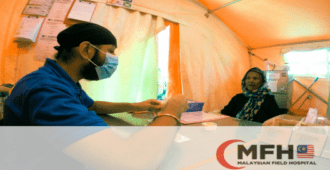It’s the time of the year again, new semester just kicks in, new pharmacy students take their first tentative steps into the realm of university life.
And the third and fourth year students have started (seriously) thinking about their future. For graduates, what options do I have post-convo?
It’s a long post; the table of contents below will help you navigate your reading.
- Addressing your questions on pharmacy career
- Pharmacist career: The big picture
- The application process
- Public and private hospitals
- Newer options – do you know that?…
- Community pharmacy
- Be your own boss
- Industry (Pharma companies)
- Universities@Schools of Pharmacy
- Knock, knock… do you offer any graduate scholarship?
- Vacancy at Schools of Pharmacy
- Off the beaten paths: Anyone?
- Specific questions from students
- Final thoughts
In order to practice as pharmacists, new pharmacists need to complete the 1+1 compulsory service in Malaysia. The first year as Provisionally Registered Pharmacist (PRP) and the second year as Fully Registered Pharmacist (FRP). The compulsory service should be taken at training sites approved by Pharmacy Board Malaysia.
With the supply of fresh pharmacy graduates are far outstripping the available positions in the government hospitals, the future for pharmacists, once seen as a secure and stable profession, looks bleak. It’s the fundamental question of supply and demand.
To add to this predicament, many graduate with huge student debts. The situations have improved with liberalisation of PRP Training introduced in 2012; though the preferred training site is still government hospitals. Due to high demand, new pharmacy graduates are on the wait list.
Addressing your questions on pharmacy career
In the last 3-4 years, I received numerous questions from my students regarding the career pathways for pharmacists. Some of the questions are as follows:
- Apart from hospital or industry, where else can I work?
- I’m confused. Which streaming should I choose? Clinical or Industrial pharmacy?
- What are the pros and cons of choosing industry?
- What if I’m interested in working as lecturers? Can I skip the compulsory service?
- How can I get scholarship for my Masters?
- What should I do during the wait time? After Convo?
- What are my options out there?…
To answer the common questions and clarify confusions faced yearly by my students, I decided to write this blog post. And a recent post for those at early career crossroads.
This post describes career paths or options for new pharmacists. The post is divided into the different sections where I discuss the options available in hospital, community, industry and universities.
Pharmacist career: The big picture
If you are a big picture person, have a quick look at my sketch below. Or you can just read through it and perhaps see where you prefer or fit in. As an unofficial guide to career in pharmacy, mostly in Malaysia, this post is not meant to be comprehensive. I do welcome any comments and updates from the readers. You may also refer to BPK for further details.
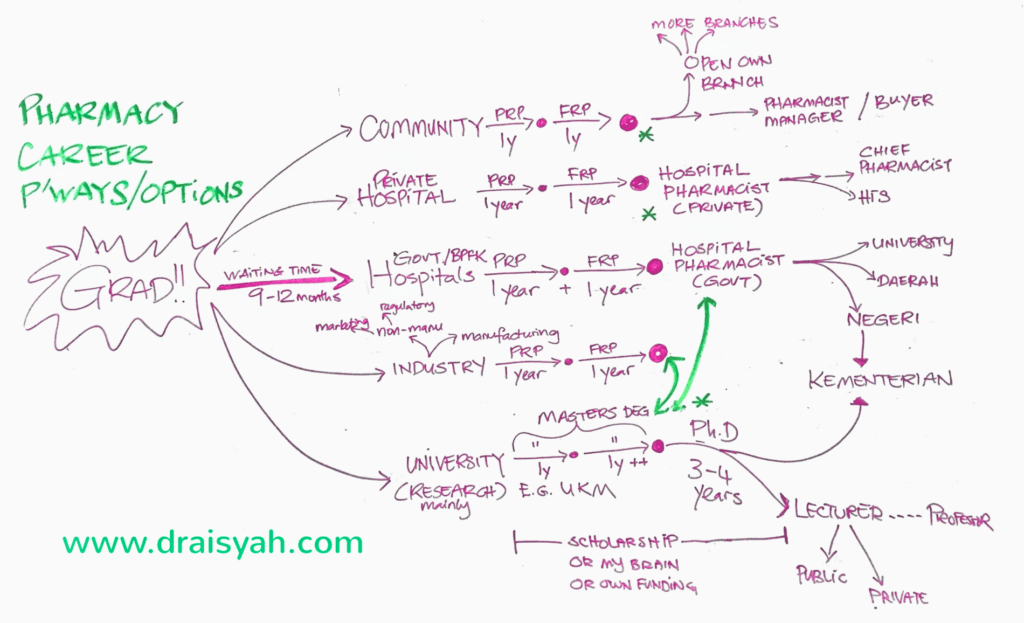
First of all, as job seekers, don’t panic. As you can see in my whiteboard sketch above, there are many options out there for a new pharmacist. Skills that are highly valued in any pharmacy career paths are teamwork and collaborative skills with good interpersonal, communication and social skills. So do critical and creative thinking skills. Positive attitude are also quite important in dealing with patients and other healthcare team members.
With plenty of opportunities in universities, make sure you develop and master these soft skills during your undergraduate studies and while waiting for placements.
Additionally, bear in mind that the dynamic nature of supply and demand in the job market for pharmacists means that these options may change depending on the training site availability, number of fresh vs. junior pharmacists, policies and other factors.
For the list of approved PRP training sites, click here. Read my blog post on applying for a PRP position in this unprecedented time.
Let’s take a look at each one, in turn, starting from hospital pharmacists at government hospitals, since this is the most preferred route.
The application process
For the most preferred route, expect a bottleneck. Recently I learned from my former student Fazwin Samsu Rahman that new graduates need to do 3 things to secure a PRP spot in a government agency/hospital. See the application process of the ePharmacist (flowchart).
So you need to apply for:
1. PRP registration with Malaysia Pharmacy Board via PRISMA.
2. UF41 post on Suruhjaya Perkhidmatan Awam website (SPA)
3. a place in Ministry of Health (hospital etc) via ePharmacist.
Graduates can expect to be called for SPA interviews around Feb-May* in the following year, post-graduation. The confirmation for PRP training site (which government hospital?) probably come in around July onwards.
The waiting time is about 3-6 months 9-12 months. It heavily depends on the available posts in the government hospitals and other agencies. Now that the process has been streamlined (no SPA interview), thus reducing the wait time for new pharmacy graduates.
For FREE PowerPoint slides on academic presentation, click here.
Public and private hospitals
As a hospital pharmacist, the pay is quite good (~RM3K++, time-based) with plenty of opportunities to learn and grow as a pharmacist, e.g. in general or university hospitals. The following are common units that one could find under a Hospital Pharmacy Department:
- Daycare
- 24-hour Pharmacy
- Outpatient Department (OPD)
- Specialist’s Clinics
- Ward supply
- Satellite pharmacy
- Aseptic pharmacy
- Drug information
- Oncology (Cytotoxic Drugs)
- Clinical pharmacokinetics
- Logistics or Integrated Store
You can learn to specialise or manage a unit/department e.g. oncology unit, OPD or satellite pharmacy, or even become Chief Pharmacist at a state hospital (well… after some years in-service).
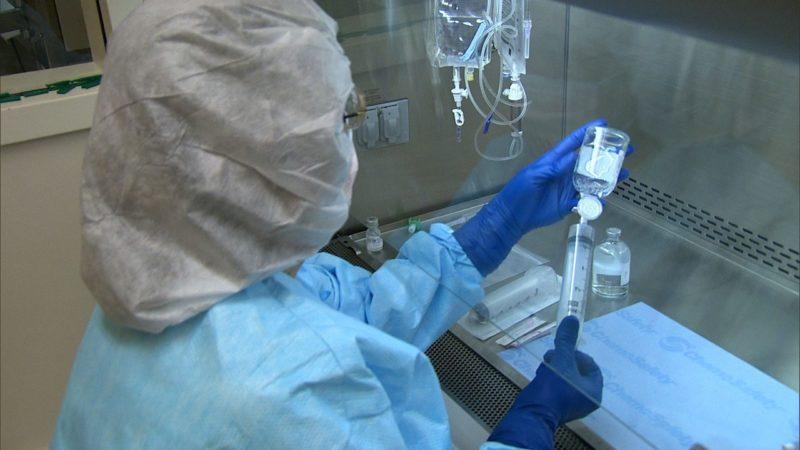
Similarly for graduates who choose the private hospital route. Depending on the size, services and clinics being offered of the private hospitals, you can learn and work your way to top management levels. If a private hospital is listed under the approved training site for PRP and there’s an immediate vacancy, I suggest you apply for the position, rather than wait for a long time.
Newer options – do you know that?…
Update (3 Nov 2018): My ex-student, Mr. Sareh Safwan shared another another option for new pharmacists out there – that one can serve as a Public Health pharmacist. In this career path, one works in health clinics (primary care) at all districts. According to him, the services being offered are quite different from a general hospital, except for Out-patient Department and Medication Therapy Adherence Clinic (MTAC).
Another little-known career option for hospital pharmacists interested in technology is Hospital Information System (HIS). Sometimes it is called Pharmacy Information System (PIS) depending on its functional areas. This option is available in both public and private hospitals. Hospital Selayang is the first hospital in Malaysia that operates under ‘paperless and filmless’ environment.
HIS integrates information in the clinical and non-clinical departments of a hospital. Mainly IT-based, however the nature of the job requires someone with clinical backgrounds, according to my pharmacist friends, Mr. Mohd Fazli Shuib and Mrs. Azrita Abd Samat.
Overall, there are a wide variety of options for new pharmacists who wish to pursue a career in a public or private hospitals.

Community pharmacy
Another option to save time is to start PRP as community pharmacists. I learn you can earn about ~RM2.5K monthly. Exactly what I got paid 20 years ago–community pharmacists must get a pay rise! Do negotiate if daily commuting is a part of the job, for example the company needs you to cover a branch for an X amount of months.
Community pharmacists work pharmacy shops which can be located near residential areas or shopping complexes. The well-known pharmacies, Guardian and Watsons are usually located in a shopping mall. The pharmacy opening times follow the mall’s. Depending on staffing, community pharmacists may work in shifts.
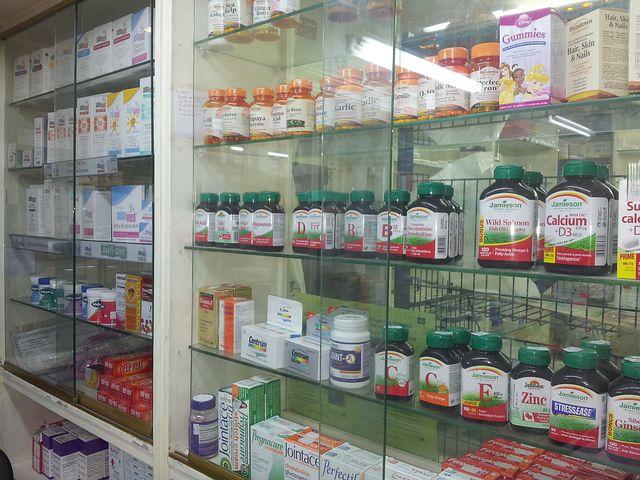
In general, pursuing this career pathway can lead to the position of pharmacist-manager of a pharmacy store. Some big retailers may also promote experienced pharmacist-manager to a pharmacy buyer position. A buyer at a retailer headquarters oversees ordering, supply and manage inventory related to healthcare products, pharmaceutical items and drugs for branches under the big retailer. In a public hospital, the pharmacist in-charge of the Integrated Store plays a similar role of a buyer.
Be your own boss
A career in community pharmacy is also for new pharmacists who are inclined towards business and entrepreneurship. If you dream of having your own pharmacy (and becoming your own boss), it’s something achievable. To make it into a reality typically requires an investment of 100K upwards. That can come from partnerships and/or bank loans. The amount goes towards shelving, initial stocks, essential renovations, leasing and staff. After 1-3 years, a pharmacy could reach the desired break-even point.
A number of pharmacist-owners would go on opening more branches. I learned that the reason for having branches is that one could achieve more savings with big volume purchases, which in turn help to increase the profit margins in the long run.
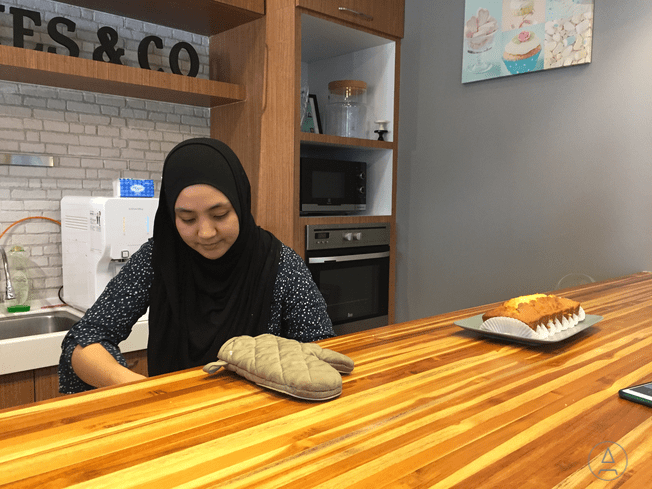
In my recent trip to Tawau, I visited my ex-student’s pharmacy-cafe-bakery, Afif Sedek and his wife Nur Syazwani, who are both FRPs. The Lifestyle Pharmacy and Cakes & Co features a fresh, new concept, sharing a shop lot with glass doors separating the two business entities. Beautiful aroma greets you as you step into the cafe. It is also more relaxing, enjoyable ambiance for customers. See more picture here. *Update, Sept 2019: Now the cafe has been extended with a closure of the pharmacy next door, I think*
This could be something you can venture into, aside from the retail pharmacy business. For the bravehearts, read more about embarking an alternative career path serving as a Military Pharmacist.
Industry (Pharma companies)
The word ‘industry’ would conjure up an image of a sterile factory housing huge interconnected stainless steel tanks. There are more to this image in industrial pharmacy.
If you love physical chemistry, pharmaceutics or formulations with strong communication skills, working in pharmaceutical companies could be a fulfilling career for you.
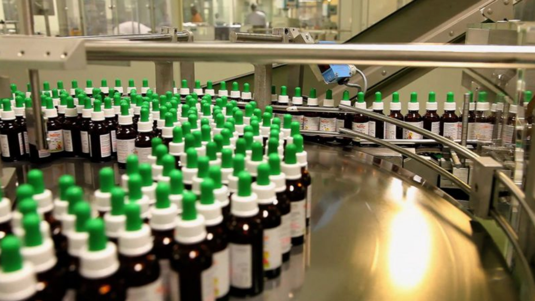
At pharmaceutical manufacturers, industrial pharmacists are involved in R&D projects, production, clinical trials, regulatory affairs and quality assurance. Teamwork is essential; teams could be composed of chemists, medicinal chemists, pharmacists, pharmacologists, toxicologists or external visitors and researchers from university or industry.
For non-manufacturing pharma companies, e.g. Abbott, Novartis, Merck, Roche, GSK, industrial pharmacists would be tasked in the regulatory affairs, pharmacovigilance and quality assurance or even in sales and marketing, and management. If you love meeting people, travelling and have an acute business sense, this career path is probably for you.
In short, one can see a growing presence of big pharma and pharmaceutical manufacturing industry in Malaysia. There is a steady demand for new pharmacists in this field. And ‘multidisciplinary’ seems to be the buzzword in the industry, similar to research being conducted at schools of pharmacy.
Universities@Schools of Pharmacy
It’s quite difficult not to be biased. Currently I’m at the Faculty of Pharmacy, Universiti Teknologi MARA (UiTM); however, after Ph.D. I started my career as a Senior Lecturer teaching organic and medicinal chemistry to pharmacy undergrads over a decade at Universiti Sains Malaysia (USM).
School of Pharmaceutical Sciences is the first and leading school of pharmacy in Malaysia. Since its inception in 1972, it has produced many notable pharmacists in Malaysia. School of Pharmaceutical Sciences ranked in the 51-100 for Pharmacy & Pharmacology in QS Top Universities Ranking 2017 (the best ever…).
There are four disciplines at the School:
- Pharmacy Practice,
- Pharmacology & Physiology,
- Pharmaceutical Technology and
- Pharmaceutical Chemistry
Many other schools of pharmacy also share similar disciplines or departments. Research at universities are generally multidisciplinary in nature where you can perhaps work in pharmacology (your main research area) and do extractions of medicinal plants (natural product chemistry).
If you are a truth-seeker, curious and love to delve deeper into nature–then doing research is one option you could consider.
‘Doing research’ means undertaking a Masters by research and continue with a Ph.D. in a related field or disciplines as mentioned above. Some pharmacists (new and experienced) may take a second route by taking Masters by coursework (e.g. M.Pharm, MBA) and then continue for a Ph.D.
How many more years?
Many students asked, how much longer do I have to spend in the university for a Ph.D.?
My conservative estimate to obtain a Ph.D. in Malaysia via the research route is 7 years (Masters, 3 years + Ph.D., 4 years) in addition to B.Pharm. degree. Via the shorter M.Pharm/MBA route, it is usually 5 years (1+4).
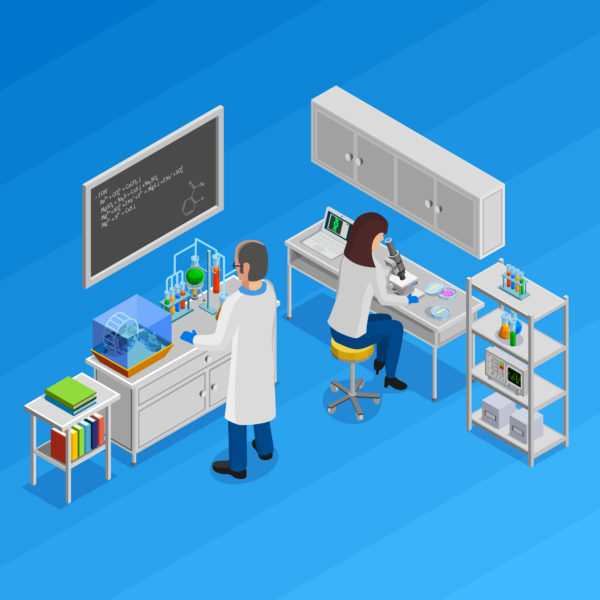
If you choose this academic route, don’t skip your compulsory service. Get your licence first. It could serve as a retirement plan 😉
Several universities in Malaysia (e.g. IMU, UKM) are listed as PRP training sites where you can undertake your Masters studies (presumably by research) during the compulsory service. It’s noted in my sketch above. Details and names of respective academic perceptors are available here.
For aspiring students, universities offer a fast-track route to B.Pharm holders with CGPA 3.67 and above, or 2nd class upper. This applies to Masters by research. That means, with good performance/prior work and CGPA, your first year Masters studies can be converted to a Ph.D. degree.
So instead of the conservative estimate of 3+4 years by research, potentially you could save 3 years and finish your Ph.D. in 4 years. This is also the route some of my USM colleagues and I took when we went for our Ph.D. studies in the United Kingdom.
If you find this post and website useful, consider supporting this website by making a donation.
Knock, knock… do you offer any graduate scholarship?
Getting a Ph.D. is not cheap. There are several options to get the funding for your postgraduate studies i.e. your own, by public universities, lecturer’s research grants, industry and other agencies.
Currently, universities in Malaysia do offer to fund your studies in the form of graduate research scholarships, fellowship or financial assistance. I found a couple here (USM and Monash University).
If you are keen on research, it’s worth to approach lecturers or potential supervisors whom you’d like to work with. Your studies can also be funded through a lecturer’s research grant, provided if it’s sufficient for the entire period of the grant.
Public universities also offer scholarships for aspiring local students under Academic Staff Training Scheme (ASTS) Fellowship, sometimes also known as SLAB. The fellowship funds your Masters and Ph.D. studies, pays monthly stipends and other allowances (e.g. bench fees, books, warm clothings). You just need to focus performing well in your studies.
Then, once you obtain your Ph.D., you are expected to return to the university and serve as a lecturer for 7 years (there’s no free lunch, unfortunately…).
That said, such scholarships offerings* by public universities depends on the funding, available posts and the needs of a school/university. To have some idea of future availability of a lecturer post, have a look at the school’s organisation chart. Then, do a quick scan on the number of lecturers, senior/junior lecturers and areas of expertise.
*Update: Such offerings are quite limited nowadays. Most universities prefer to hire someone with a Ph.D. And MyBrain funding has been stalled until further notice is back (2020). Don’t give up your dreams, do enquire newer universities.
Vacancy at Schools of Pharmacy
In general, fewer lecturers in a department/discipline compared to others may indicate future vacancy. For example, Pharmaceutical Chemistry discipline is looking for suitable B.Pharm. candidates with a Ph.D. in chemistry. It can be any chemistry–organic, medicinal, analytical, phytochemistry and so on. You can then ask about the availability by contacting or meeting the Head of Departments and/or School Deans.
Thorough search and plenty of enquiries with a good dash of perseverance are crucial in securing the financial support or scholarship for your studies. Keep knocking on the doors, hopefully one day the right door will open for you.

With a Ph.D. in hand, you can then apply for a lecturer position in 19 (and counting) schools of pharmacy at Malaysian public and private universities. This career path is also suitable for those who love teaching and be of service to others.
With a suitable PhD, you could also apply to work in Ministry of Health (MOH, Kementerian) as policymakers, researchers, administrators and management in MOH divisions e.g. Pharmaceutical Service Division (PSD, BPK in Malay) or NPRA (Biro, BPFK) and Clinical Research Centre (CRC). This career option can be considered when you’re in a senior position in a general hospital.
Off the beaten paths: Anyone?
Apart from these established career paths, new pharmacists could also consider paths relatively untrodden.
If you are creative, inclined towards technology, coding or love painting, baking and writing, perhaps you could venture into health-related careers. Consider, for instance publishing industry, mobile apps industry, creative industry and becoming social entrepreneurs.
So far, I see 3-4 students walking these paths. They are less traveled with plenty of untapped opportunities out there.
In this 21st century, do consider a pharmacy career path that leverages on technology. Embracing technology in facilitating pharmaceutical services and care seems inevitable in this age. This post gives an overview of 90+ artificial intelligence-based startups in healthcare.
For more detailed information on pharmacy careers, check out this post. (Thanks Mr Fazli for the tip-off!)
*Note* To USM pharmacy students. If you’re considering to get experience working abroad e.g. USM BPharm degree is the only pharmacy degree recognised by Singapore Pharmacy Board. It’s a big plus, less hassle. We have ex-students who are doing quite well there.
Specific questions from students
Doctor, how did you choose your PRP?
In Life, I realised there are three categories of people. Those who know exactly what they want, the confused and those who thought they knew. The first category needs no explanation; the middle was where I belonged to, so I had to find out which career out there is meant for me.
I did my BPharm at Cardiff University, UK. Nowadays, it’s a four-year MPharm programme; in the fourth year, students can opt for different training experiences (hospital, industry, academic). Back in my days, it was a 3-year programme that prepares you as a generalist. After graduation, I did the compulsory 1-year service at Hospital Ipoh and took the forensic exams (passed the 2nd time).
Honestly, I learned a lot during my PRP in the hospital, but then I realised it’s not for me. So I decided to work in retail pharmacies. It was literally a walk-in interview. I remember vividly that I walked into a pharmacy in Beach Street, Penang asking if there’s any vacancy. After a short interview, luckily I got the job. In my career as retail pharmacist, I also had the opportunity working in the then flagship Watson’s Personal Care Stores (KOMTAR).
After about 3.5 years in retail, I then realised the nature of retail pharmacy work was not for me. It was around the time of economic recession; with few customers, few varieties/challenges, I felt ‘brain-dead’… I decided to continue my studies. After knocking on many ‘doors’ for scholarship, I managed to get USM ASTS Fellowship to pursue my Ph.D. in Pharmaceutical Chemistry at University of Nottingham, got my PhD and returned home to serve USM until end 2018.
Doctor, how did you choose chemistry for Ph.D?
Some students asked how did I choose chemistry for my Ph.D., and not other disciplines? My short answer… I didn’t choose chemistry, it chose me. At secondary school, I realised I could understand and appreciate chemistry better than physics and biology subjects. Likewise, in undergrad days – well, the rest is history.
What can I do while waiting for PRP posting?
Doctor, I want to do PRP in government hospital but what can I do during the long wait? Well… I heard of my ex-students worked various jobs–pharmacist assistants, sales promoters, insurance agents, sell cup cakes, barista or simply a stay-at-home-pharmacy graduates (a.k.a. tolong mak bapak).
Some combined travelling and working overseas during that time; as research assistants, event coordinators to lecturers and many more.
You can catch up with your novels, movies or learn new skills, scuba diving, coding, making new apps, learn Japanese and Korean languages. Whatever you fancy, really…
So for the confused students, I suggest you explore the options until you get the right fit, or you fit in the right workplace. For those who thought they knew, at certain moments you would get the ‘signs and symptoms’. These would manifest as events that come with pain, uneasiness, fear, sadness. Don’t ignore them, instead take notice of these and do something about it.
Switch career paths, specialisation or keep exploring options until you feel good about the chosen career. Quoting Steve Jobs: don’t settle.

Get inspired by trailblazers, Datuk Nicol David and Yuna who are pursuing their passions.
Final thoughts
Key to choosing the right career for yourself is also about knowing your preferences, skills, strengths and limitations. What you can, what you cannot and what you can compromise are important self-knowledge. Be honest with yourself.
Ultimately a career in any of the above paths should be challenging and professionally fulfilling as you develop your own career path. A B.Pharm. degree may not give you the security of a job, but it forms a great foundation for the career path you choose to undertake in the future.
Do you have other great ideas, questions or interesting career paths for new pharmacists? I’d love to hear from you. Share them in the comment box below. Or drop me a line by emailing me: hello at draisyah.com
If you find this post useful, I’d appreciate it if you could help spread the word! And help support this website by making a donation.
Thank you =)
Trust that one fine day, the dots will be connected. Everything will make sense to you.





